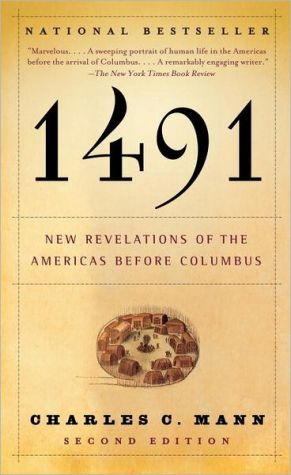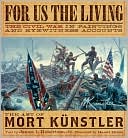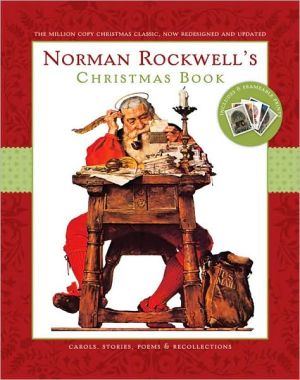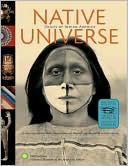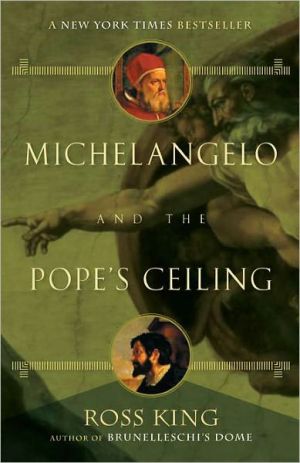1491: New Revelations of the Americas Before Columbus
A groundbreaking study that radically alters our understanding of the Americas before the arrival of the Europeans in 1492.\ Traditionally, Americans have learned in school that the ancestors of the American Indians crossed the Bering Strait 12,000 years ago, existed in small, nomadic bands, and lived so lightly on the land that much of the Americas was wilderness when Columbus set sail. But as Charles Mann makes clear, in the last 20 years archaeologists and anthropologists using new...
Search in google:
A groundbreaking study that radically alters our understanding of the Americas before the arrival of the Europeans in 1492. Traditionally, Americans learned in school that the ancestors of the people who inhabited the Western Hemisphere at the time of Columbus s landing had crossed the Bering Strait twelve thousand years ago; existed mainly in small, nomadic bands; and lived so lightly on the land that the Americas was, for all practical purposes, still a vast wilderness. But as Charles C. Mann now makes clear, archaeologists and anthropologists have spent the last thirty years proving these and many other long-held assumptions wrong. In a book that startles and persuades, Mann reveals how a new generation of researchers equipped with novel scientific techniques came to previously unheard-of conclusions. Among them: In 1491 there were probably more people living in the Americas than in Europe. Certain cities -- such as Tenochtitlán, the Aztec capital -- were far greater in population than any contemporary European city. Furthermore, Tenochtitlán, unlike any capital in Europe at that time, had running water, beautiful botanical gardens, and immaculately clean streets. The earliest cities in the Western Hemisphere were thriving before the Egyptians built the great pyramids. Pre-Columbian Indians in Mexico developed corn by a breeding process so sophisticated that the journal Science recently described it as man s first, and perhaps the greatest, feat of genetic engineering. Amazonian Indians learned how to farm the rain forest without destroying it -- a process scientists are studying today in the hope of regaining this lost knowledge. Native Americans transformed their land so completely that Europeans arrived in a hemisphere already massively landscaped by human beings. Mann sheds clarifying light on the methods used to arrive at these new visions of the pre-Columbian Americas and how they have affected our understanding of our history and our thinking about the environment. His book is an exciting and learned account of scientific inquiry and revelation. About the Author CHARLES C. MANN is a correspondent for Science and The Atlantic Monthly, and has cowritten four previous books including Noah s Choice: The Future of Endangered Species and The Second Creation. A three-time National Magazine Award finalist, he has won awards from the American Bar Association, the Margaret Sanger Foundation, the American Institute of Physics, and the Alfred P. Sloan Foundation, among others. His writing was selected for The Best American Science Writing 2003 and The Best American Science and Nature Writing 2003. He lives with his wife and their children in Amherst, Massachusetts.The New York Times Book Review - Kevin BakerMann navigates adroitly through the controversies. He approaches each in the best scientific tradition, carefully sifting the evidence, never jumping to hasty conclusions, giving everyone a fair hearing—the experts and the amateurs; the accounts of the Indians and their conquerors. And rarely is he less than enthralling. A remarkably engaging writer, he lucidly explains the significance of everything from haplogroups to glottochronology to landraces. He offers amusing asides to some of his adventures across the hemisphere during the course of his research, but unlike so many contemporary journalists, he never lets his personal experiences overwhelm his subject.
Why Billington Survived\ THE FRIENDLY INDIAN\ On March 22, 1621, an official Native American delegation walked through what is now southern New England to negotiate with a group of foreigners who had taken over a recently deserted Indian settlement. At the head of the party was an uneasy triumvirate: Massasoit, the sachem (political-military leader) of the Wampanoag confederation, a loose coalition of several dozen villages that controlled most of what is now southeastern Massachusetts; Samoset, sachem of an allied group to the north; and Tisquantum, a distrusted captive, whom Massasoit had reluctantly brought along as an interpreter.\ Massasoit was an adroit politician, but the dilemma he faced would have tested Machiavelli. About five years before, most of his subjects had fallen before a terrible calamity. Whole villages had been depopulated—indeed, the foreigners ahead now occupied one of the empty sites. It was all he could do to hold together the remnants of his people. Adding to his problems, the disaster had not touched the Wampanoag’s longtime enemies, the Narragansett alliance to the west. Soon, Massasoit feared, they would take advantage of the Wampanoag’s weakness and overrun them.\ Desperate threats require desperate countermeasures. In a gamble, Massasoit intended to abandon, even reverse, a long-standing policy. Europeans had been visiting New England for at least a century. Shorter than the natives, oddly dressed, and often unbearably dirty, the pallid foreigners had peculiar blue eyes that peeped out of the masks of bristly, animal-like hair that encased their faces. They were irritatingly garrulous, prone to fits of chicanery, and often surprisingly incompetent at what seemed to Indians like basic tasks. But they also made useful and beautiful goods—copper kettles, glittering colored glass, and steel knives and hatchets—unlike anything else in New England. Moreover, they would exchange these valuable items for cheap furs of the sort used by Indians as blankets. It was like happening upon a dingy kiosk that would swap fancy electronic goods for customers’ used socks—almost anyone would be willing to overlook the shopkeeper’s peculiarities.\ Over time, the Wampanoag, like other native societies in coastal New England, had learned how to manage the European presence. They encouraged the exchange of goods, but would only allow their visitors to stay ashore for brief, carefully controlled excursions. Those who overstayed their welcome were forcefully reminded of the limited duration of Indian hospitality. At the same time, the Wampanoag fended off Indians from the interior, preventing them from trading directly with the foreigners. In this way the shoreline groups put themselves in the position of classic middlemen, overseeing both European access to Indian products and Indian access to European products. Now Massasoit was visiting a group of British with the intent of changing the rules. He would permit the newcomers to stay for an unlimited time—provided that they formally allied with the Wampanoag against the Narragansett.\ Tisquantum, the interpreter, had shown up alone at Massasoit’s home a year and a half before. He spoke fluent English, because he had lived for several years in Britain. But Massasoit didn’t trust him. He seems to have been in Massasoit’s eyes a man without anchor, out for himself. In a conflict, Tisquantum might even side with the foreigners. Massasoit had kept Tisquantum in a kind of captivity since his arrival, monitoring his actions closely. And he refused to use him to negotiate with the colonists until he had another, independent means of communication with them.\ That March Samoset—the third member of the triumvirate—appeared, having hitched a ride from his home in Maine on an English ship that was plying the coast. Not known is whether his arrival was due to chance or if Massasoit had asked him to come down because he had picked up a few English phrases by trading with the British. In any case, Massasoit first had sent Samoset, rather than Tisquantum, to the foreigners.\ Samoset had walked unaccompanied and unarmed into the circle of rude huts in which the British were living on March 17, 1621. The colonists saw a robust, erect-postured man wearing only a loincloth; his straight black hair was shaved in front but flowed down his shoulders behind. To their further amazement, this almost naked man greeted them in broken but understandable English. He left the next morning with a few presents. A day later he came back, accompanied by five “tall proper men”—the phrase is the colonist Edward Winslow’s—with three-inch black stripes painted down the middle of their faces. The two sides talked inconclusively, each warily checking out the other, for a few hours. Five days later, on the 22nd, Samoset showed up again at the foreigners’ ramshackle base, this time with Tisquantum. Meanwhile Massasoit and the rest of the Indian company waited out of sight.\ Samoset and Tisquantum spoke with the colonists for about an hour. Perhaps they then gave a signal. Or perhaps Massasoit was simply following a schedule. In any case, he and the rest of the Indian party appeared without warning at the crest of a hill on the south bank of the creek that ran through Patuxet. Alarmed by Massasoit’s sudden entrance, the settlers withdrew to the hill on the opposite bank, where they had emplaced their few cannons behind a half-finished stockade. A standoff ensued.\ Finally Winslow exhibited the decisiveness that later led to his selection as colony governor. Wearing a full suit of armor and carrying a sword, he waded through the stream and offered himself as a hostage. Tisquantum, who walked with him, served as interpreter. Massasoit’s brother took charge of Winslow and then Massasoit crossed the water himself followed by Tisquantum and twenty of Massasoit’s men, all ostentatiously unarmed. The colonists took the sachem to an unfinished house and gave him some cushions to recline on. Both sides shared some of the foreigners’ homemade moonshine, then settled down to talk, Tisquantum translating.\ To the colonists, Massasoit could be distinguished from his subjects more by manner than by dress or ornament. He wore the same deerskin shawls and leggings and like his fellows had covered his face with bug-repelling oil and reddish-purple dye. Around his neck hung a pouch of tobacco, a long knife, and a thick chain of the prized white shell beads called wampum. In appearance, Winslow wrote afterward, he was “a very lusty man, in his best years, an able body, grave of countenance, and spare of speech.” The Europeans, who had barely survived the previous winter, were in much worse shape. Half of the original colony now lay underground beneath wooden markers painted with death’s heads; most of the survivors were malnourished.\ Their meeting was a critical moment in American history. The foreigners called their colony Plymouth; they themselves were the famous Pilgrims.* As schoolchildren learn, at that meeting the Pilgrims obtained the services of Tisquantum, usually known as “Squanto.” In the 1970s, when I attended high school, a popular history text was America: Its People and Values, by Leonard C. Wood, Ralph H. Gabriel, and Edward L. Biller. Nestled among colorful illustrations of colonial life was a succinct explanation of Tisquantum’s role:\ A friendly Indian named Squanto helped the colonists. He showed them how to plant corn and how to live on the edge of the wilderness. A soldier, Captain Miles Standish, taught the Pilgrims how to defend themselves against unfriendly Indians.\ My teacher explained that maize was unfamiliar to the Pilgrims and that Tisquantum had demonstrated the proper maize-planting technique—sticking the seed in little heaps of dirt, accompanied by beans and squash that would later twine themselves up the tall stalks. And he told the Pilgrims to fertilize the soil by burying fish alongside the maize seeds, a traditional native technique for producing a bountiful harvest. Following this advice, my teacher said, the colonists grew so much maize that it became the centerpiece of the first Thanksgiving. In our slipshod fashion, we students took notes.\ The story in America: Its People and Values isn’t wrong, so far as it goes. But the impression it gives is entirely misleading.\ Tisquantum was critical to the colony’s survival, contemporary scholars agree. He moved to Plymouth after the meeting and spent the rest of his life there. Just as my teacher said, Tisquantum told the colonists to bury several small fish in each maize hill, a procedure followed by European settlers for the next two centuries. Squanto’s teachings, Winslow concluded, led to “a good increase of Indian corn”—the difference between success and starvation.\ Winslow didn’t know that fish fertilizer may not have been an age-old Indian custom, but a recent invention—if it was an Indian practice at all. So little evidence has emerged of Indians fertilizing with fish that some archaeologists believe that Tisquantum actually picked up the idea from European farmers. The notion is not as ridiculous as it may seem. Tisquantum had learned English because British sailors had kidnapped him seven years before. To return to the Americas, he in effect had to escape twice—once from Spain, where his captors initially sold him into slavery, and once from England, to which he was smuggled from Spain, and where he served as a kind of living conversation piece at a rich man’s house. In his travels, Tisquantum stayed in places where Europeans used fish as fertilizer, a practice on the Continent since medieval times.\ Skipping over the complex course of Tisquantum’s life is understandable in a textbook with limited space. But the omission is symptomatic of the complete failure to consider Indian motives, or even that Indians might have motives. The alliance Massasoit negotiated with Plymouth was successful from the Wampanoag perspective, for it helped to hold off the Narragansett. But it was a disaster from the point of view of New England Indian society as a whole, for the alliance ensured the survival of Plymouth colony, which spearheaded the great wave of British immigration to New England. All of this was absent not only from my high school textbooks, but from the academic accounts they were based on.\ This variant of Holmberg’s Mistake dates back to the Pilgrims themselves, who ascribed the lack of effective native resistance to the will of God. “Divine providence,” the colonist Daniel Gookin wrote, favored “the quiet and peaceable settlement of the English.” Later writers tended to attribute European success not to European deities but to European technology. In a contest where only one side had rifles and cannons, historians said, the other side’s motives were irrelevant. By the end of the nineteenth century, the Indians of the Northeast were thought of as rapidly fading background details in the saga of the rise of the United States—“marginal people who were losers in the end,” as James Axtell of the College of William and Mary dryly put it in an interview. Vietnam War–era denunciations of the Pilgrims as imperialist or racist simply replicated the error in a new form. Whether the cause was the Pilgrim God, Pilgrim guns, or Pilgrim greed, native losses were foreordained; Indians could not have stopped colonization, in this view, and they hardly tried.\ Beginning in the 1970s, Axtell, Neal Salisbury, Francis Jennings, and other historians grew dissatisfied with this view. “Indians were seen as trivial, ineffectual patsies,” Salisbury, a historian at Smith College, told me. “But that assumption—a whole continent of patsies—simply didn’t make sense.” These researchers tried to peer through the colonial records to the Indian lives beneath. Their work fed a tsunami of inquiry into the interactions between natives and newcomers in the era when they faced each other as relative equals. “No other field in American history has grown as fast,” marveled Joyce Chaplin, a Harvard historian, in 2003.\ The fall of Indian societies had everything to do with the natives themselves, researchers argue, rather than being religiously or technologically determined. (Here the claim is not that indigenous cultures should be blamed for their own demise but that they helped to determine their own fates.) “When you look at the historical record, it’s clear that Indians were trying to control their own destinies,” Salisbury said. “And often enough they succeeded”—only to learn, as all peoples do, that the consequences were not what they expected.\ This chapter and the next will explore how two different Indian societies, the Wampanoag and the Inka, reacted to the incursions from across the sea. It may seem odd that a book about Indian life before contact should devote space to the period after contact, but there are reasons for it. First, colonial descriptions of Native Americans are among the few glimpses we have of Indians whose lives were not shaped by the presence of Europe. The accounts of the initial encounters between Indians and Europeans are windows into the past, even if the glass is smeared and distorted by the chroniclers’ prejudices and misapprehensions.\ Second, although the stories of early contact—the Wampanoag with the British, the Inka with the Spanish—are as dissimilar as their protagonists, many archaeologists, anthropologists, and historians have recently come to believe that they have deep commonalities. And the tales of other Indians’ encounters with the strangers were alike in the same way. From these shared features, researchers have constructed what might be thought of as a master narrative of the meeting of Europe and America. Although it remains surprisingly little known outside specialist circles, this master narrative illuminates the origins of every nation in the Americas today. More than that, the effort to understand events after Columbus shed unexpected light on critical aspects of life before Columbus. Indeed, the master narrative led to such surprising conclusions about Native American societies before the arrival of Europeans that it stirred up an intellectual firestorm.\ COMING OF AGE IN THE DAWNLAND\ Consider Tisquantum, the “friendly Indian” of the textbook. More than likely Tisquantum was not the name he was given at birth. In that part of the Northeast, tisquantum referred to rage, especially the rage of manitou, the world-suffusing spiritual power at the heart of coastal Indians’ religious beliefs. When Tisquantum approached the Pilgrims and identified himself by that sobriquet, it was as if he had stuck out his hand and said, Hello, I’m the Wrath of God. No one would lightly adopt such a name in contemporary Western society. Neither would anyone in seventeenth-century indigenous society. Tisquantum was trying to project something.\ Tisquantum was not an Indian. True, he belonged to that category of people whose ancestors had inhabited the Western Hemisphere for thousands of years. And it is true that I refer to him as an Indian, because the label is useful shorthand; so would his descendants, and for much the same reason. But “Indian” was not a category that Tisquantum himself would have recognized, any more than the inhabitants of the same area today would call themselves “Western Hemisphereans.” Still less would Tisquantum have claimed to belong to “Norumbega,” the label by which most Europeans then referred to New England. (“New England” was coined only in 1616.) As Tisquantum’s later history made clear, he regarded himself first and foremost as a citizen of Patuxet, a shoreline settlement halfway between what is now Boston and the beginning of Cape Cod.\ Patuxet was one of the dozen or so settlements in what is now eastern Massachusetts and Rhode Island that comprised the Wampanoag confederation. In turn, the Wampanoag were part of a tripartite alliance with two other confederations: the Nauset, which comprised some thirty groups on Cape Cod; and the Massachusett, several dozen villages clustered around Massachusetts Bay. All of these people spoke variants of Massachusett, a member of the Algonquian language family, the biggest in eastern North America at the time. (Massachusett was the name both of a language and of one of the groups that spoke it.) In Massachusett, the name for the New England shore was the Dawnland, the place where the sun rose. The inhabitants of the Dawnland were the People of the First Light.
Introduction : Holmberg's mistake1A view from above32Why Billington survived313In the land of four quarters624Frequently asked questions975Pleistocene wars1376Cotton (or anchovies) and maize (tales of two civilizations, part I)1747Writing, wheels, and bucket brigades (tales of two civilizations, part II)2048Made in America2439Amazonia28010The artificial wilderness31211The great law of peace329App. ALoaded words339App. BTalking knots345App. CThe syphilis exception351App. DCalendar math355
\ Kevin BakerMann navigates adroitly through the controversies. He approaches each in the best scientific tradition, carefully sifting the evidence, never jumping to hasty conclusions, giving everyone a fair hearing—the experts and the amateurs; the accounts of the Indians and their conquerors. And rarely is he less than enthralling. A remarkably engaging writer, he lucidly explains the significance of everything from haplogroups to glottochronology to landraces. He offers amusing asides to some of his adventures across the hemisphere during the course of his research, but unlike so many contemporary journalists, he never lets his personal experiences overwhelm his subject.\ —The New York Times Book Review\ \ \ \ \ Alan Taylor… Mann's 1491 vividly compels us to re-examine how we teach the ancient history of the Americas and how we live with the environmental consequences of colonization.\ — The Washington Post\ \ \ Publishers WeeklyThis production is-as most nonfiction audios ought to be-a "reading" as distinct from a "performance." Johnson renders this thoroughly researched, well-written history of early North and South American Indian populations in a strong, clear voice, with excellent intonation. His diction is almost too perfect-one occasionally focuses on pronunciation rather than content. Most of the book is written in narrative form that sweeps listeners through an exciting rethinking of all we ever learned about when so-called Indians first inhabited the American continents and how they may have come here, about their numbers, religions, cultures, inventions, social structures and their relations to European invaders and settlers. When Mann relates the internecine battles among schools of anthropologists and archeologists, however, the listener might wish he had the book in hand for clarity. It might be wise from the start to make a list of the numerous Indian and European individuals and groupings. This audiobook is well worth the trouble. Simultaneous release with the Knopf hardcover (Reviews, June 20). (August) Copyright 2005 Reed Business Information.\ \ \ \ \ Foreign AffairsThe boom in new scholarship on the Western Hemisphere before Columbus is intelligently synthesized in 1491, the engrossing bestseller by the able science popularizer Mann. Sifting adroitly through the accumulating evidence and the academic disputes, Mann drives home these arguments: the Americas may well have birthed the world's first complex civilization (seizing that claim from Mesopotamia); in 1491 the Americas were densely populated by a dazzling panoply of diverse civilizations superior to 1491 Europe in many areas, including technology, statecraft, and epic poetry; and Indians throughout the Americas, far from living in a pristine, untouched ecology, found ways to manage and improve their environments (that "low-hanging fruit" grew in planted orchards). European viruses, more than guns or steel, explain the utter demise of glorious empires and up to 100 million natives. Mann softens his myth-bashing by underplaying the systematic cultural genocide of the Counter Reformation conquistadors. With its many enlightening comparisons to European achievements, 1491 should be required reading in all high school and university world history courses.\ \ \ \ \ Library JournalWhat were the Americas like before the arrival of Christopher Columbus changed the native cultures of the Western Hemisphere forever? Mann, a correspondent for Science and the Atlantic Monthly, provides a fascinating, in-depth examination of this question, identifying tantalizing clues and offering new conclusions from recently discovered archaeological evidence. He explores three different but ultimately related themes. First, the demographics of pre-contact Native American societies are examined to demonstrate that populations in many parts of the Americas were actually much larger than previously believed. (In fact, in all likelihood, more people were living in the Americas, pre-1492, than in Europe.) Next, Mann probes the probability that native peoples inhabited the Americas much earlier than previously thought. Finally, he examines the ecological impact that indigenous groups had on their environments. Mann has done a superb job of analyzing and distilling information, offering a balanced and thoughtful perspective on each of his themes in engaging prose. Including an extensive bibliography, this excellent archaeological synthesis is highly recommended for anthropology and archaeology collections in academic and large public libraries. [See Prepub Alert, LJ 4/1/05.]-Elizabeth Salt, Otterbein Coll. Lib., Westerville, OH Copyright 2005 Reed Business Information.\ \ \ \ \ Kirkus ReviewsUnless you're an anthropologist, it's likely that everything you know about American prehistory is wrong. Science journalist Mann's survey of the current knowledge is a bracing corrective. Historians once thought that prehistoric Indian peoples somehow lived outside of history, adrift and directionless, "passive recipients of whatever windfalls or disasters happenstance put in their way"; that view was central to the myth of the noble savage. In fact, writes Mann (Noah's Choice, with Mark L. Plummer, 1995), Native Americans were as active in shaping their environments as anyone else. They built great and wealthy cities; they lived, for the most part, on farms; and their home continents "were immeasurably busier, more diverse, and more populous than researchers had previously imagined." In defending this view, Mann visits several thriving controversies in the historic/prehistoric record. One is the question of pre-contact demographics: old-school scholars had long advanced the idea that there were only a few million Native Americans at the time of the Columbian arrival, whereas revisionists in the 1960s posited that there were eight million on the island of Hispaniola alone, a figure punctured by revisionists of revisionism, now beset by Native American activists for the political incorrectness of adjusting the census. Another controversy is the chronology of human presence in the Americas: the old date of 12,000 b.c., courtesy of the Bering Land Bridge in Alaska, no longer cuts it. Other arguments center on the nature of Native American societies such as the Aztec and Inca, the latter of whom built a great empire that, defying Western notions of logic, had no market component. Mannaddresses each controversy with care, according the old-timers their due while making it clear that his sympathies lie, in the main, with the rising generation. He closes with a provocative thesis: namely, that the present worldwide movement toward democracy owes not to Locke or Newtonian physics, but to Indians, "living, breathing role models of human liberty."An excellent, and highly accessible, survey of America's past: a worthy companion to Jake Page's In the Hands of the Great Spirit (2003). First printing of 40,000\ \ \ \ \ Midwest Book ReviewIf you haven't read [it] because the book form seems too weighty, don't miss the audio edition. . . . [It] is even more gripping as an audio listen, allowing listeners to absorb more of the many facts than printed word seems to readily offer.\ \ \ \ \ Boston Globe. . . a landmark of a book that drops ingrained images of colonial America into the dustbin.\ \
